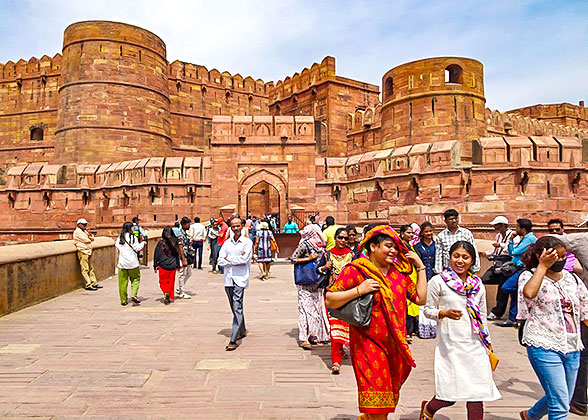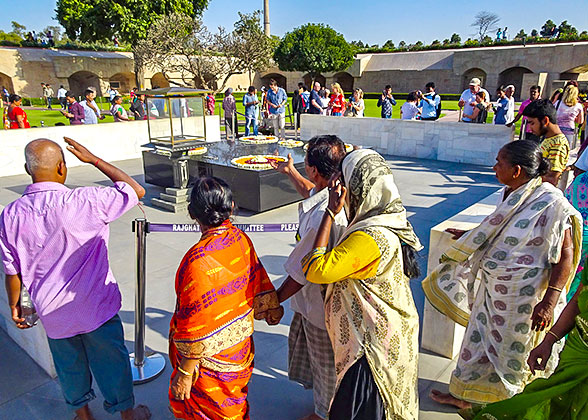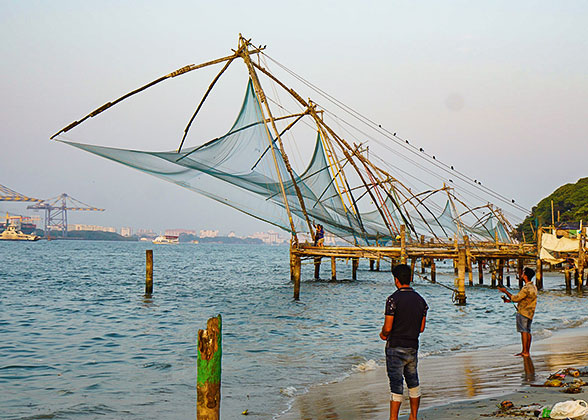Agra Fort – Experience Agra's Rich History
Agra Fort, located in Agra, India is the symbolism of bravery, resilience, and pride. It has a unique identity that makes it a major tourist spot for people coming to Agra from around the world. In the era of invasions and fortifications, this fort has overcome daunting adversities and made its mark in history as the signature fort called the “Fort Rouge”.

|
The Agra Fort is the highlight of Agra and the lofty bastion and curves of the fort make it an architectural masterpiece with its grandeur palaces and buildings. The perfect location of Agra Fort looking into the riverbank of Yamuna etches a memorable landscape in the minds and hearts of the tourists visiting this magnificent place. This enchanting and mesmerizing beauty of the fort had inscribed it as one of UNESCO's World Heritage Sites back in the year 1983. Agra Fort is the prerogative of mighty and instills in all of us the grit and valour of the men and women that gave their lives even in the face of fear and challenges to preserve and protect this mighty building for future generations to witness and relish.
Keynotes on Agra Fort
![]() Opening Time: 6:00 – 18:00 every day
Opening Time: 6:00 – 18:00 every day
![]() Entry Fee: INS 300
Entry Fee: INS 300
![]() How to Reach: You can visit this historic place from Taj Ganj via the Shah Jahan Park or take an auto-rickshaw for around INS 80.
How to Reach: You can visit this historic place from Taj Ganj via the Shah Jahan Park or take an auto-rickshaw for around INS 80.
![]() Best Time to Visit: November to February
Best Time to Visit: November to February
Any type of eatables is not allowed inside the fort.
The History Background
Architecture
The Agra Fort is about 2.5km (1.6mi) northwest of the Taj Mahal, one of the Seven Wonders of the World. This fort is a classic icon that portrays the lavish lifestyle of Mughals during those times. The walls of the fort are 70-feet high and the perimeter of the walls of the fort is around 2 kilometers. The Agra fort has been a gem in the eye for many invaders and rulers. It is a semi-circle shaped fort and is also usually described as a walled city as it houses numerous impressive buildings, such as the Jahangir Mahal, Diwan-i-Khas, Khas Mahal, Musamman Burj, Moti Masjid, and Machchhi Bhawan which are the key highlights of the fort.
|
|
|
 Fort Gates of Agra Fort
Fort Gates of Agra Fort
The awe-striking beauty and the crafted intricate designing skills shown by the workmen in those ancient times leave the tourists speechless. The rich cultural heritage of Agra Fort has instilled a wave of surprise and enchantment in the minds of travelers visiting the fort from all around the world. The fort has four gates among which Delhi Gate and Lahore Gate are quite common. The Delhi Gate was also used as a security gate during invasions. Now this gate is used by the Indian Army and is not open for the public. The Elephant Gate is an inner gateway that is claimed to be standing even when a war elephant challenges it. The Amar Singh Gate is the southern gate from where the tourists are allowed to enter and are directed towards the ticket counter. Passing through the ticket counter, you would be led to the Jehangir Palace and will see a large bowl carved out of a single stone called the Hauz-i-Jehangir. It was used for bathing purposes during those times.Once you reach inside the fort, you will see a blend of Indian and Central Asian architectural styles that depict the cultural mix during those times. You will also see the Anguri Bagh that is a large courtyard. In this courtyard, you will see an entrance that leads down a flight of stairs into a two-story labyrinth of underground rooms and passageways where it's said that Akbar used to keep his 500-strong harem. This place is now locked.
|
|
|
 The Musamman Burj in Agra Fort
The Musamman Burj in Agra Fort
The Musamman Burj, a lovely white-marble octagonal tower and palace is at the north of the Khas Mahal where Shah Jahan was imprisoned by his son Aurangzeb for eight years, from where he used to gaze out at the Taj Mahal until his death in 1666. The Diwan-i-Khas (Hall of private audience), along with the eastern wall of the fort, once housed the legendary Peacock Throne which was taken to Delhi by Aurangzeb then to Iran in 1739 by Nadir Shah and destroyed after his assassination in 1747. On the northern side of the courtyard is a side door that leads to the exquisite Nagina Masjid (Gem Mosque) that was built in 1635 by Shah Jahan for the ladies of the court. A women’s bazaar was situated down below for the ladies.





